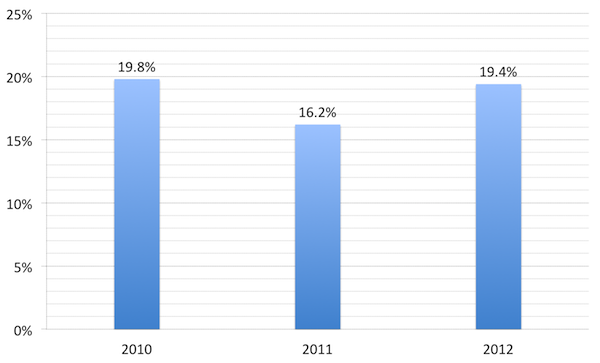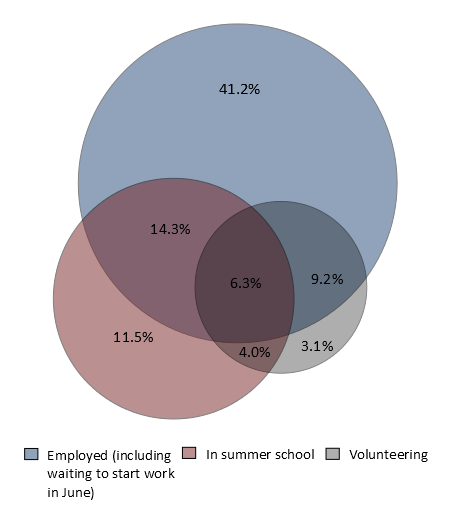Summer employment for students, being a vital source of both income and experience, is one of those things that everyone agrees is really important but almost nobody understands. What students actually do in the summer months is a messy mix of work, school, volunteering and (occasionally) bumming around. Today, we’re releasing the 2012 edition of our series on summer employment (co-authored by new HESA associate Jacqueline Lambert and yours truly), entitled Making the Most of It: Canadian Student Employment in Summer 2012.
Overall, the summer employment picture is a mixed one. Employment and summer school attendance are both down slightly, unemployment is up slightly – back almost to the level it was at in 2010 – but so too (among the employed) are average hours worked and total weekly wages.
Figure 1 – Student Summer Unemployment, HESA CanEd Student Survey

Why so high an unemployment figure? Didn’t Statscan just publish something saying it was 13%? Yes, but, (i) Statscan’s figure was for “students 20-24,” whereas we look at university students only but are more inclusive of age and (ii) Statscan’s definition of unemployment systematically underreports student unemployment, whereas ours doesn’t.
Here’s why. The Labour Force Survey defines anyone who was taking a full course load during the previous four weeks as being “not in the labour force.” That may make sense from September to April, but our data suggests that a substantial portion of students who are in school are also working full-time. Perhaps more pertinently, a large number of those who are in school are only “parking” themselves while searching for a job. Statscan may not see these students as participating in the labour market, but from their own perspective, they are. Our figures reflect that fact.
The Venn diagram below gives a sense of how complicated summer student labour force activity really is (the bubbles don’t add to 100% because we exclude the roughly 10% of students who are neither working, studying or volunteering… a group which is mostly composed of unsuccessful job seekers and students taking the summer to travel). Those who choose to work and do nothing else during the summer are certainly the largest group of students, but they are not the majority. Nearly a third of students are mixing some combination of work, study and volunteering. Among these students, the search for skills and experience seems to trump the search for more money.
Figure 2 – Students’ Labour Market and Educational Activities, Summer 2012

One final interesting point from our survey concerned student self-employment. Far from being the preserve of entrepreneurial engineering and business students, it turns out that those likeliest to be making money on their own are… visual and performing arts students. Music lessons, it seems, are both lucrative and flexible enough to fit around other paying work.

 Tweet this post
Tweet this post
